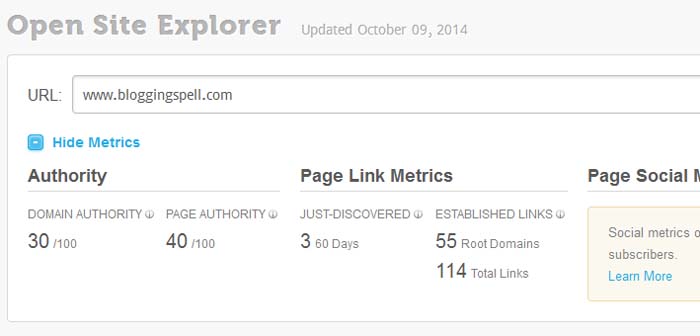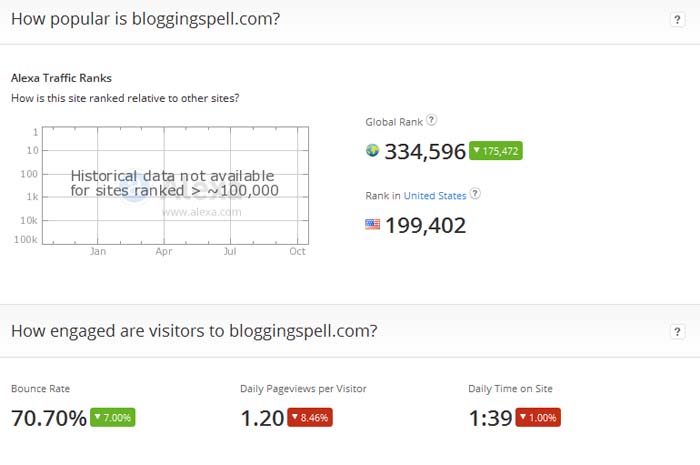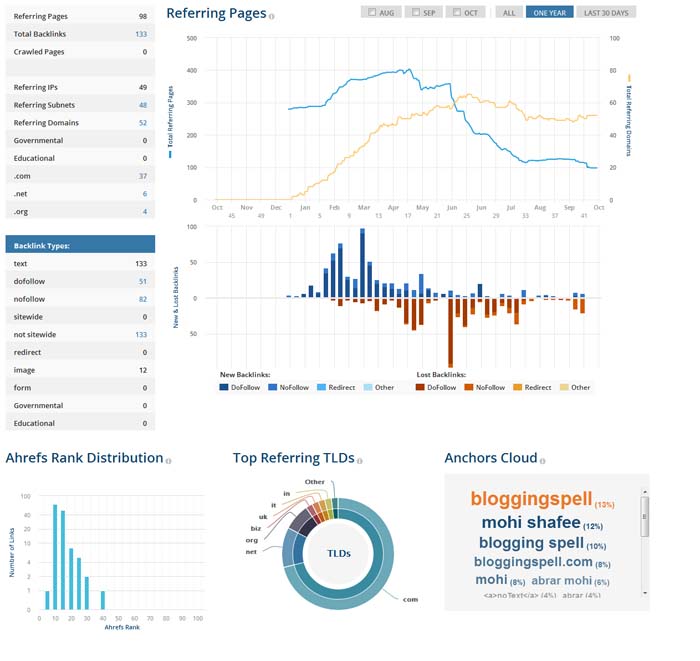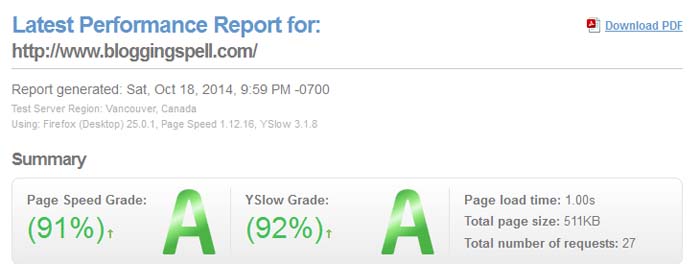5 Simple Steps to Evaluate SEO of A Website in 2014
SEO strategies are constantly changing for the demands of search engines. Some strategies were really effective in the early 2000s, but nowadays they’re not. In the same light, what is now effective may not be later on.
Updating strategies based on trends is the best practice I have ever experienced. From the mid-1990s, webmasters and content providers began to optimize their websites for search engines. And now, in 2014 we are still optimizing our websites but practice different strategies from before. In line with that, the evaluation process should also be changed to go along with it.
Google’s way of evaluating the SEO of a website has dramatically changed over time. In fact, if we used the old processes, we won’t be able to make value out of it. So, it is crucial to know the strategies that exist now, especially the latest algorithms.
Some of us are not well aware – so as to make things clear, I have included 5 steps to evaluate SEO effectiveness of a website.
Step #1: Check Website Authority
Website authority means the strength of your website against others. In the SEO industry, it is the combination of domain and page authority which are also called Moz DA and PA.
The authority by Moz is calculated between 1 to 100 points depending over 40 different signals. And here is a technical explanation of DA and PA:
Whereas Domain Authority measures the predictive ranking strength of the entire domains or subdomains, Page Authority measures the strength of individual page.
The DA and PA are the aggregate of 3 metrics:
1. MozRank – It measures the link popularity.
2. MozTrust – It measures the link trust.
3. Link Profile – It measures the total link profile.
By checking a website’s Moz authority, we can get a quick evaluation of how the site is, altogether. In fact, we may get a quick review of the site’s link popularity, trust and profile too. With that, it certainly is a qualified choice.
So just head over to Moz’s Open Site Explorer and perform this checkup. In this case, a higher rate means better authority. (For all analysis in this post, I will be using my new personal blog Blogging Spell🙂
We can see it has a domain authority of 30/100, and a page authority of 40/100. This rate adequately show that the site reviewed is quite new and not yet authoritative over search engines.
Step #2: Check Social Signals
Social media platforms were not given that much importance a few years ago. Do you know why? Because everybody thought, they weren’t enough to deliver a valuable amount of sales.
All the search engines including Google and Bing are still using social signals to rank a website. So those who opted to leave these platforms probably missed the sure fire chance to rank at the top.
When I first heard that Moz Beginner’s Guide to SEO ranked on the 4th position for the search query “beginner’s guide” – just because of a tweet by Smashing Magazine – I was appalled.
Since then, I have been a great fan of social media sites. Now that everyone has started to realize how effective these sites are, digging into the social signals will help let us know how a site is performing over the social media platforms.
Signals point out a website’s popularity – with the higher signals depicting more popularity and recommendations in the social media platforms and the ‘lower signal’ shows less popular and possibly unrated by the audiences.
There are lots of free sites to check social signals, but you can use Ahrefs:
Step #3: Check Traffic Ranks
A site without traffic is like a pool without water – it’s nothing.
Traffic rank is another great factor to determine a website’s success. A site with a huge number of daily visitors means it has something important. The visitors benefit from the website, otherwise they won’t be going there daily.
Traffic can reveal if a website is worth ranking or not. If you look into some popular websites, you will come to realize that they are also leading in the search engines.
So the equation is: Higher Ranking = Higher Traffic.
That is why we should leverage the traffic ranks to accurately evaluate a website. There are also three things to look for besides the traffic rank:
1. Bounce Rate – Lower bounce rate is better for a website.
2. Search Visits – Higher search visits mean higher rankings in search engines.
3. Time Spend on Site – It will let you know how well the content is.
No idea how to do this? You might possibly know about Alexa, Compete and Quantcast – the top notch companies that record traffic data and count ranks as well.
Step #4: Conduct a Link Audit
Backlinks are similar to votes. Whenever we love a website, we vote for it by creating links that lead back to it. Meaning, the total number of links equate to the number of people who value a website.
Search engines always has its eyes on rank worthy websites. If the ranking process depended on a program, there may be difficulty in getting correct and accurate decisions. In this case, when the program needs help in ranking the appropriate website, the backlinks will help finalize that decision.
By conducting the link audit of a website, we will learn how much a website was appreciated through the number of links that managed to connect back to it – the more natural a link profile is, the more trustworthy the SEO job was done. After launching a link audit, focus on the following factors:
1. Total Number of Links – The higher is always better.
2. Referring Pages – The higher is better, but it should be in a good ratio with referring domain.
3. Referring Domains – Higher is always better for this one. But high authoritative domains are the best.
4. Backlink Types – Nofollow and Dofollow both are good in a natural proportion.
5. Anchor Text Distribution – The most natural distribution is the best.
How do we do that? That’s easy, we will need a program. My favorites are Open Site Explorer, Ahrefs and MajesticSEO. Here is my Ahrefs link audit for reference:
Step #5: Check Website Performance
Website performance is also a contributing factor to evaluate a website’s SEO.
Actually, SEO is not just about making content and optimizing it for search engines. It’s way above that. It’s the process of optimizing pages for the visitors first, and then search engines.
Every search engine wants to deliver the best user experience. Website performance means too many things. There are so many things that need to be focused in order to maintain a great performance. Some of them are:
1. Page Load Time – Lower is better. You might look here how to speed up a website.
2. Total Page Size – Lower is better for this too.
3. Total Number of Request – It should be the minimum.
Now let’s see how to have this site’s performance checked. There are lots of tools available for free but I would recommend GTmetrix. So head over there and perform your checkup. We should have the target to score over 90 in both page speed grade and slow grade. And here is my result:
Google Toolbar PageRank – Why Didn’t I Mention it?
On October 2013, Matt Cutts announced there won’t be a pagerank update in 2013 – but then, it updated on the 6th of December of the same year. Since then, we haven’t seen any more update yet.On October 6, 2014, Google’s John Mueller said:
We’ll probably not…be updating it [PageRank] going forward, at least in the Toolbar PageRank.
He mentioned, probably Google will not be updating toolbar pagerank anymore. So it’s likely dead to the SEO industry.
Now, we shouldn’t use it to evaluate the SEO of a website. Why? Because almost a year passed, but the pageranks are still the same as before. I’m sure a lot of things have changed in all the websites from the past year, so the pagerank they are showing is not presently accurate.
I’m pretty sure you wouldn’t want to use any inaccurate info to evaluate a website.
Over to You!
The SEO evaluation process has changed a lot from the early 2000s. To keep ourselves up with the latest trends, we need to update our SEO strategies as well as the SEO evaluation strategies.
I think there are a lot of tools available to evaluate the SEO of a website. I would be happy if you share your favorite one through commenting. All the best.





